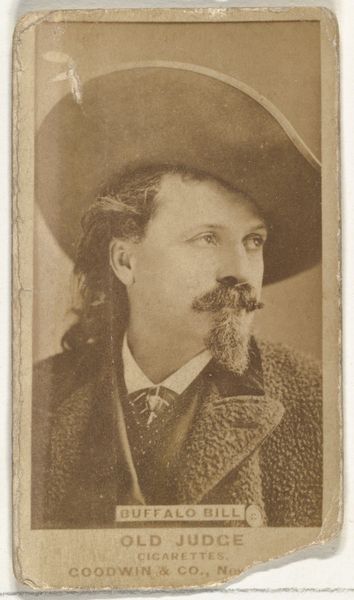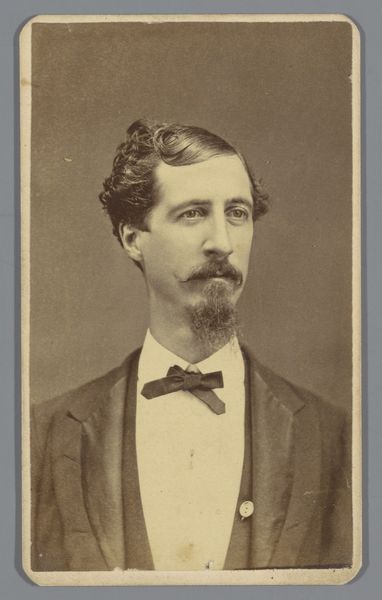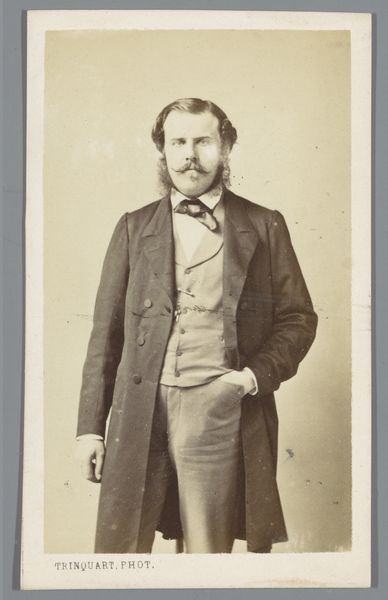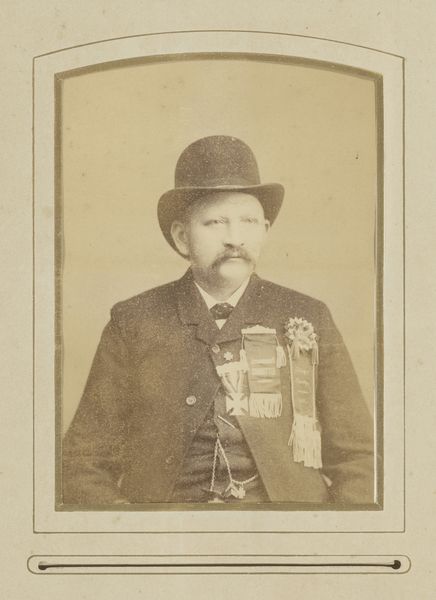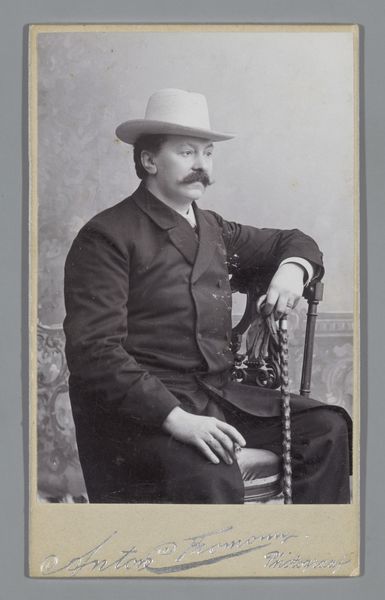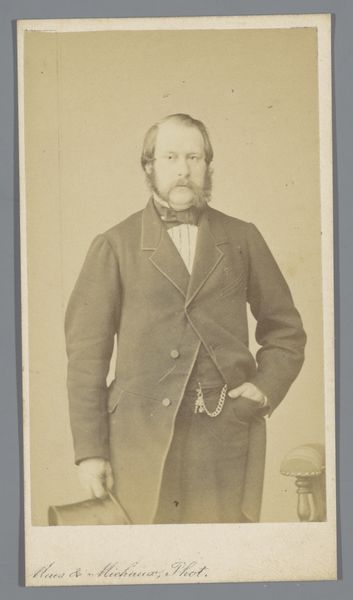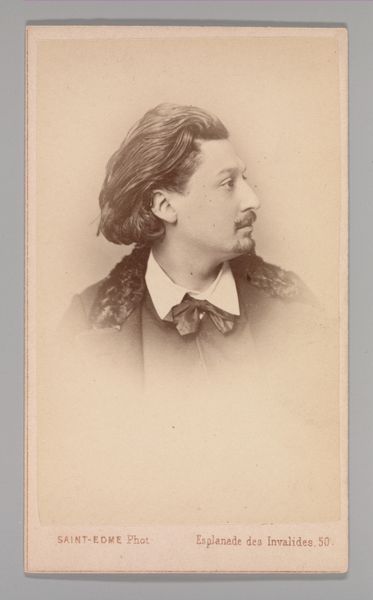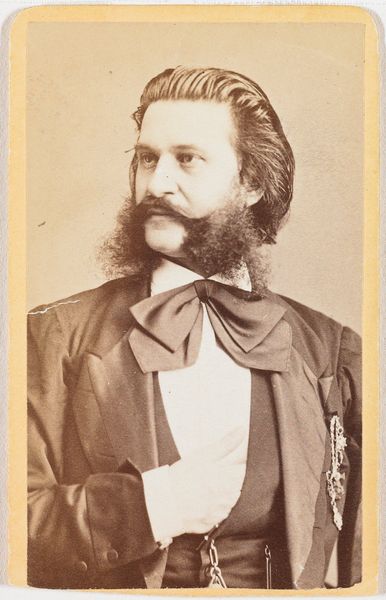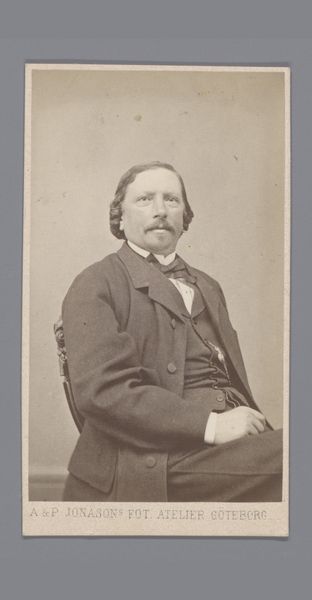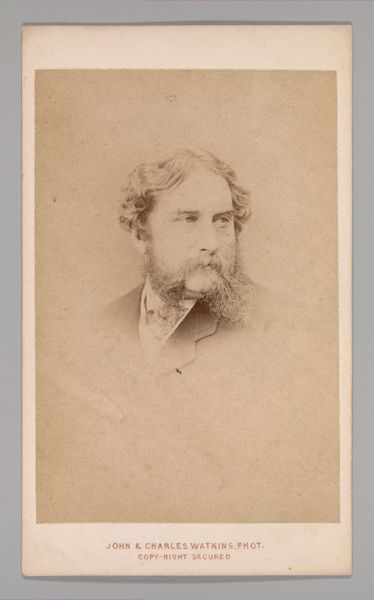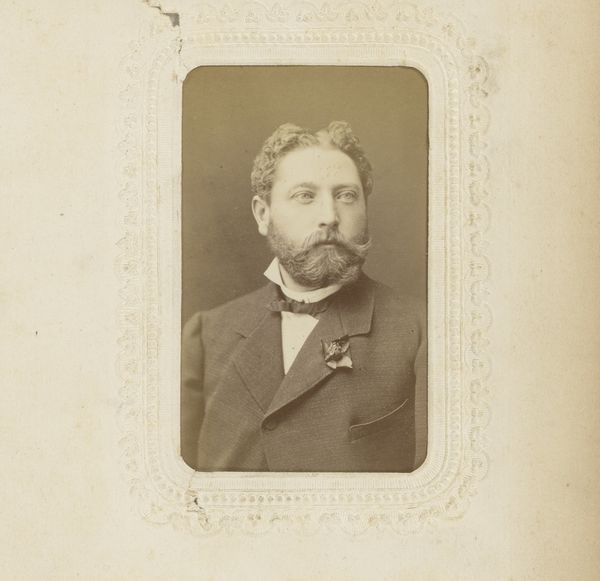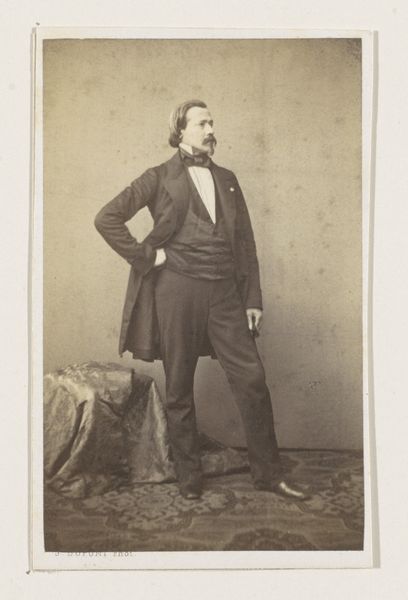
photography, albumen-print
portrait
photography
historical photography
19th century
albumen-print
realism
Dimensions: Image: 3 5/8 × 2 1/4 in. (9.2 × 5.7 cm) Mount: 4 1/8 × 2 1/2 in. (10.4 × 6.3 cm)
Copyright: Public Domain
Editor: Here we have a photograph entitled "James B. 'Wild Bill' Hickock" taken between 1871 and 1875 by Jeremiah Gurney. It’s an albumen print. The sepia tones give it an old-world feel, and Hickock's gaze is surprisingly gentle despite the "Wild Bill" moniker. What catches your eye in this portrait? Curator: It's interesting you mention the gaze. I am fascinated by how such portraits often served to mythologize figures. Notice the hat: it's not just a hat; it’s a halo, framing his face, associating him with the romanticized vision of the West. How does it play into the iconography of the “Wild West” hero? Editor: I see what you mean. It's almost theatrical, part of crafting an image. What about the mustache? Curator: The mustache is essential! Think about its visual weight, how it dominates the lower half of his face. In terms of symbolic language, it screams masculinity, virility, dominance. In Victorian photography, the presentation of self was very calculated, wasn't it? How would people interpret that today, I wonder? Editor: Probably with a bit more irony, given how conscious we are now of image construction. It’s interesting how staged these old photos are! Curator: Exactly. This image persists as part of America's collective memory. The symbolism embedded here informs how we perceive that era and those figures, wouldn't you say? Editor: Definitely, it's like a visual shorthand for the Wild West. I never thought about a mustache carrying so much weight! Curator: It serves as an emblem of the archetype. Such persistent signs shape how we understand a culture, then and now.
Comments
No comments
Be the first to comment and join the conversation on the ultimate creative platform.
